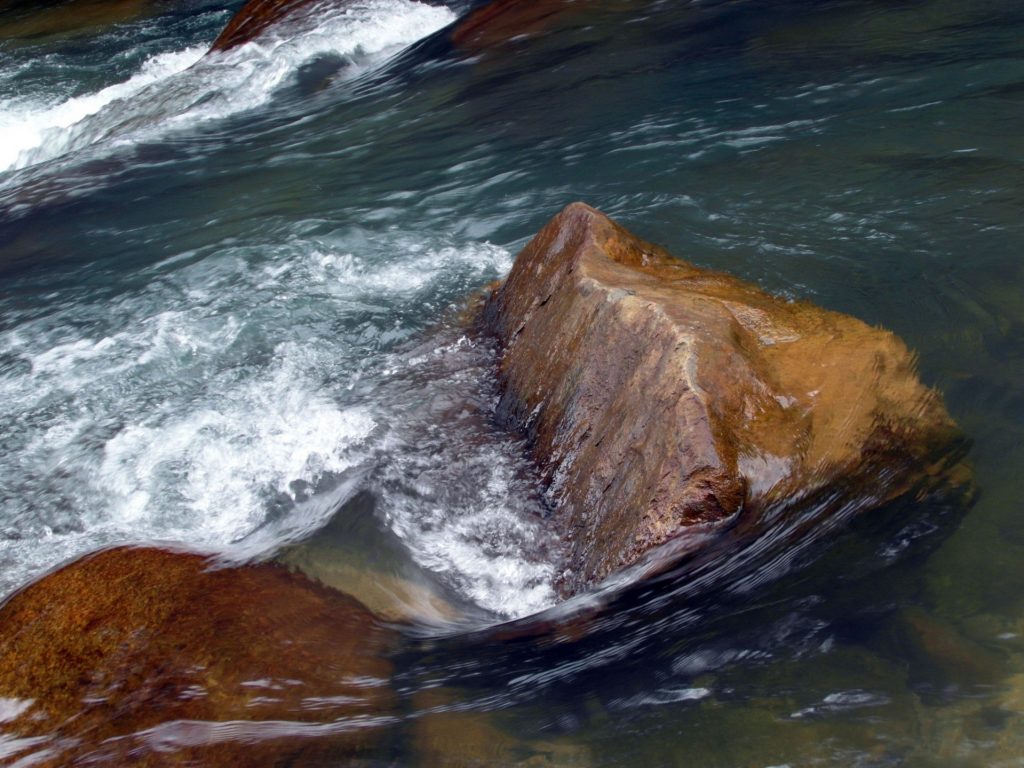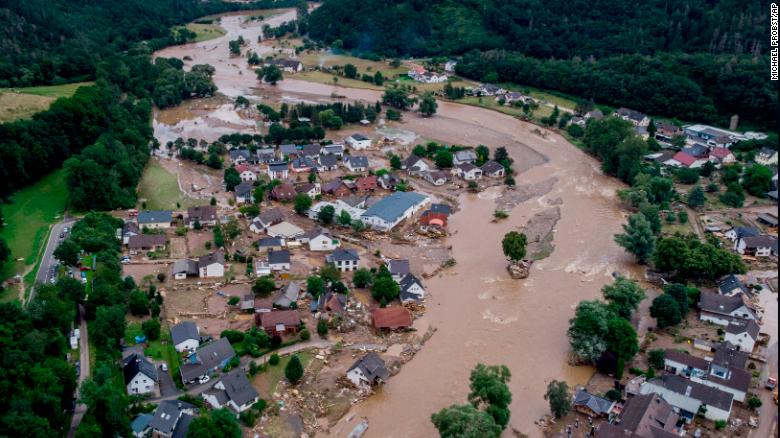Maladaptation is an important concept, but one we understand very differently in a paradigm of complex adaptive ecosystems compared to the way we thought about it in classical adaptive evolutionary terms. Contemporary evolutionary ecology sees adaptation and therefore maladaptation as an emergent phenomenon of complex ecosystems, which means that the old linear view doesn’t give us a good understanding of the situation. For one thing, that outdated cause-and-effect mechanistic view of adapation (and maladaptation) posits a direct one-to-one correlation between a single physical or behavioral trait of a single species, that changes in response to one specific environmental parameter that changes. Since it’s maladaptive, the change is seen as deleterious to the organism that expresses this trait, whether it’s physical or behavioral. (Please notice that a maladaptive trait is one that’s deleterious to one’s own species, and especially one’s own self, rather than to other species or beings.) The problem here is that we are looking once again at a linear, directional process that has only two dance partners: one species and one parameter of the environment. Other species in the same ecosystem, and other environmental parameters, have no place in this picture. Since adaptation (and therefore maladaptation) is a whole-ecosystem emergent phenomenon, and since we can’t just “scale up” this one tiny bit to get the whole real picture, that old view of maladaptation simply fails to tell us useful things.
Yet maladaptation seems like a potentially useful concept. So how might we think about maladaptation in the real complex systems of the natural world?
I’d like to suggest the image of a large stone in a mountain stream as a useful metaphor.1 Here’s a picture of such a stone in such a mountain stream. The image actually provides a great deal of rich knowledge of several inter-related kinds. This is particularly true if you connect it to your own experience of rivers and stones and perhaps of wading in such places. So let me point out some of the things you can see in this very powerful photograph. If you have a physical memory of what that water feels like as it slips around the stone the way you can see it doing, please access those memories as you read the rest of the text on this page.

Imagine the river bottom here in its initial state, before the stone was carried in and plopped down during a flood at some point, There is sand and silt on the riverbed, as well as small stones. If there were no big stones at all in this part of the river or stream, the bed would be fairly uniform and smooth. Once you plop down this big stone, however, the water rushes around it to each side in a way that dramatically changes the hydrodynamics of the stream flow right there. You can see how the water is “piled up” on the upstream side where it first hits the rock, and you can see the water picks up speed (shown in the “white water” froth) as it zips down around the sides of the stone. There’s a particularly turbulent sweep between this big stone we’re looking at and one to our left that has its “back” to us and is mostly underwater in our view.
Now think about what you would experience if you were in this water and trying to wade near this stone. I bet you know almost inuitively that there are places here you could not easily stand up without being swept off your feet. There are other places where you’d be liable to step into a deep hole that’s been scoured out because of the way the stone has changed the water flow. There are some deep piles of fine sand in certain places around the stone as well. The presence of the stone interrupts the smooth flow of the water, which changes the way it scours out some parts of the river bed and deposits sediments in others. This in turn changes the way the sand, silt, and smaller stones being carried by the river are deposited or moved or put in various other places farther from the stone. Ultimately, this stone being where it is changes the whole configuration of the streambed. As other stones are deposited in other floods, the river changes more and more. It reworks itself constantly in response to the dynamic interplay between the water and the stones and all the other things (silt, sand, sticks) in the river.
Are these changes “good” for the river or “bad” for it? I’m asking because we initially looked at this stone plopping down in the stream as being a potential metaphor for a maladaptive behavioral trait. So it matters, this business of trying to consider whether we can we even meaningfully apply these value terms to water and stones that are simply in a constant dance of balancing water currents and speed, and configurations of the sand, silt, and stones carried by that water at different times of year. I suspect the only time we’d even care to do such a thing as apply a value judgment to the process is if a flood was big enough to carry in some new boulders big enough to smash through the wall of a house on the stream bank. That happens sometimes. But of course the question then is: Did the house get built on the river’s land at a time when stream flow was low enough that it simply didn’t use that space for a while? Or did the river go where it wasn’t ever supposed to go? Is it even reasonable to think that rivers engage in property acquisition tactics, rather than that their presence flowing somewhere means that’s their own land? When we judge a particular change in a river’s flow area as “good” or “bad,” the bigger issues are how we see land ownership and the rights of people compared to the rights of the river and all the land it’s part of. Even in the places where rivers are flooding on land they have not flooded for generations, it’s still floodplain the river created at least as recently as during the last Ice Age.

Let’s return to the original picture of the stone in a mountain stream. Did you ever walk on an ocean beach right where the waves were coming in and out around your feet? If so, I bet you’ve experience a relationship between the water, the sand, and your own feet that’s very much like that between the river water, its bed, and the stone in that photograph. Do you remember feeling the odd sensation of the sand being sucked right out from under your feet as the water ran out away from you? The mere fact of your weight being on the sand at your feet changed the dynamic relationship between the water and the sand. It made the sand underneath your feet erode out so quickly that a sort of cavity formed beneath each foot. Do you remember feeling that? Then when the next wave came in, it moved layers of sand over your feet in a wholly different way.
Environments where water moves over substrates such as sand are very dynamic and complex. There is a rich and constantly-moving interplay between all the elemens. A stone that is dropped in this environment, or a human who’s walking through it, changes that dynamic interplay in amazing ways. The forces involved are strong enough that even fairly shallow moving water can pick up rocks weighing tons and carry them for long distances.
Japan’s new seawalls are up to 40 feet tall, to resist tsunamis. Miami and New York City are planning massive seawalls to resist rising sea levels. Feel what your feet know about the interplay of land and water at the kind of place a seawall is built. What sorts of things would have to be done to make sure the seawall wasn’t undermined and swept away by the interplay of forces in that environment? What effect does that have on a dynamic, complex, living system? If you aren’t sure, you could look at Borja et al 2010 or Ritter et al 2008 to get some concrete ideas.
Questions to facilitate your conceptual weaving process:
How might you define or describe a maladaptive human behavioral trait? (Just give it a shot to help you think through all this.)
What kind of criteria make a trait maladaptive? For instance, could a stone plopped down in a river bed be considered maladaptive? Why or why not? What about a house built next to the water on the inside or outside bank of a sinuous river? Why might that be, or not be, maladaptive?
Why do you think people engage in maladaptive behaviors if they have negative consequences?
—–
[1] Using metaphor to help us understand a complex process does not mean the process itself is a metaphor or not real. Complex systems and processes are ontologically real things, even when we do not fully understand them. Metaphor is a powerful way of understanding complex things. The term “metaphor” is used in several very different ways by different Western scholars. In some of them, metaphors refer to things that are not real. Indigenous people, in my experience, generally use metaphors, in the same way the Land itself uses them. We do not usually worry much about the definition or “logical consequences” of metaphor because we don’t tend to see it as a construct of human intellect but as a part of Knowledge. What matters right now, in this discussion, is that you understand this: Indigenous metaphor is as real as Story (with capital S, not lower-case), and for similar reasons. If you are a person from Western culture this may not make much sense to you yet. The root of the problem between our use of metaphor and your perception of it resides in the same place you have problems understanding the living nature of Story. So that’s where the discussion needs to take place. This footnote exists only to stipulate, as clearly as I can, that using a metaphor to explain maladaptation does NOT mean that maladaptation is not a real phenomenon. Instead, within Indigenous worldview (where I am standing), metaphor teaches something that’s particularly true and real.
Click here to return to the list of pages at Weaving the Basket.
Click here for list of References.
